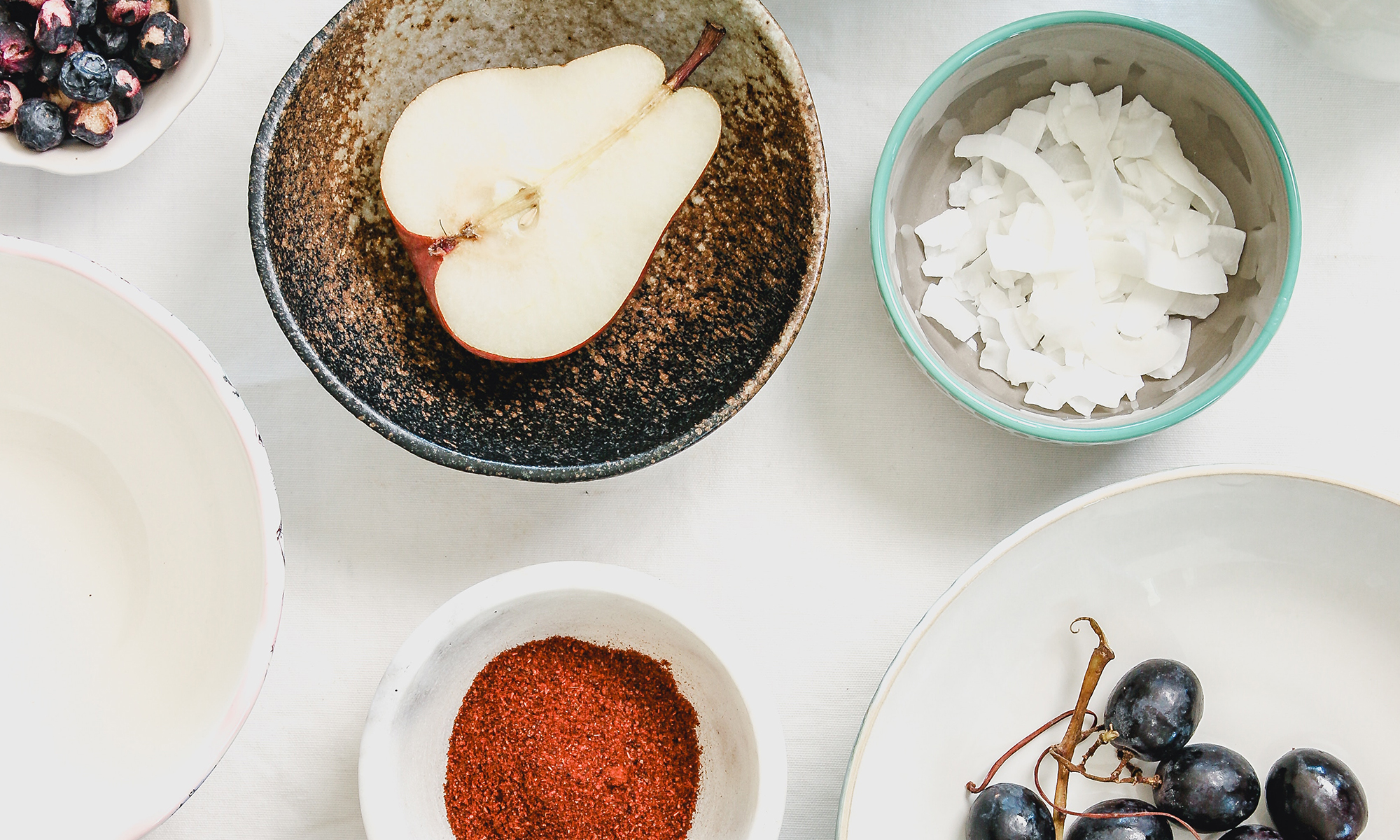Four Burgers opened up just a month ago in Central Square with the mission of serving high quality, simply prepared burgers and fries. In this modern era of eco-friendly dining, they do the right thing by composting, recycling, and serving ingredients with known provenance. The net result, for the most part, is fabulous: Juicy, meaty burgers with flavorful toppings and fries that taste like potatoes.
There’s been a small hiccup in the business—and that has been the sweet potato fries. While most would agree that anything fried and salted is better, these fries suffer in that they never get really crispy. Short of coating them with a non-organic/unnatural substance (as many lesser burger joints do), the options are somewhat limited.
The composition of the sweet potatoes creates a layered challenge with sugar, starch and water issues at play. Food science research leaves a gaping hole in this domain.
For regular potatoes, culinary experiments have yielded the best technique… first soaking the potatoes in water to rinse some of the excess starch, cooking the potatoes a first time in 325F oil and then a second cooking in 375F oil to crisp them. Intermediate refrigeration between frying further alters the starches which better enables a crispy fry. Researchers have discovered that Idaho potatoes are the best variety, and farmers have refined the genetics to consistently produce a fail-safe potato.
What works for regular fried potatoes does not translate to sweet potatoes because of the starch, sugar and water content.
And while there are a few sweet potato varieties out there (White Hamon) that are better suited, they are not mass marketed, leaving the small restaurateur to experiment with the readily available varieties.
The starch issue is a complicated one… And after researching in Harold McGee’s On Food and Cooking, I discover this is more complicated than I can address with chain starches and branch starches and the chemical reactions of both. The water and sugar contents pose a more straight-forward challenge. As we know, moisture is the enemy of crispy [[Think about meringues on a humid day or fried eggplant]].
In order to get “watery” foods crispy, we must first batter them to prevent the moisture from seeping out and soggying the crust. Sweet potatoes get crispy in tempura batter because they are sufficiently coated.
Alternatively, in the case of regular potatoes, the minimal water evaporates before the fry crisps up – creating a fry with long-lasting crispiness.
This is when the challenge of the sugar content kicks in: Sugar begins to caramelize about at 334F and starts turning bitter at 363F. This narrow window limits the opportunity for the sweet potato fry to rid itself of excess moisture and get crispy.
Armed with this (somewhat limited) knowledge base, Michael B. (owner of Four Burgers) and I got to work.
Our baseline was a sweet potato fry that was cooked in 350F oil until golden brown and soft in the middle. The fry was mildly crispy straight out of the oil, but quickly turned limp.
The first wave of experiments involved coating the raw fries with a type of starch that would help absorb moisture and increase the starches that would crispy up the fries. We tried corn, wheat and potato starches. And with a nod to the tempura batter, we also made a mix of corn and wheat flours. The best yield was the corn starch. Straight out of the fryer, the potato was crispier than the original, but soon met a similar fate of limpness – though the crisp to limp time gap was greater.
Other starches provided minimal improvement. The biggest complaint was that the floury coating took away from the flavor and “Mouth feel” of the potatoes.
The second round of experiments involved drying the potato first before frying. First, we “par-” fried the potatoes the way regular fries are. This seemed to produce a crispy fry but we soon realized that this extra step was minimal better than the baseline, and not worth the effort.
Par-Baking the potatoes yielded the best result. The potatoes dried out with a gentle heat. Unlike the fryer, the drying process did not brown (i.e. caramelize the sugars in) the potatoes. By the time we put them in the fryer, they crisped up quickly and stayed crispy.
Special thanks to Michael B. and his staff for allowing me to play in their kitchen! Stop by, have a burger and fries and let me know what you think!

